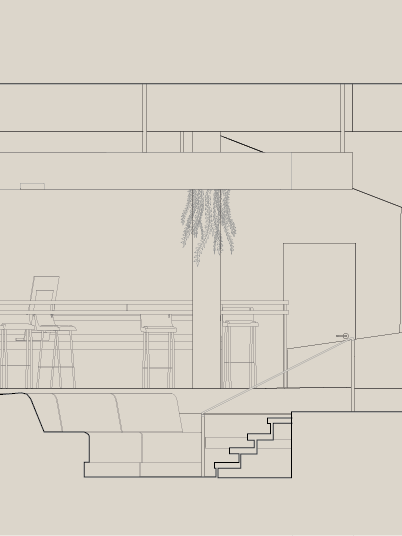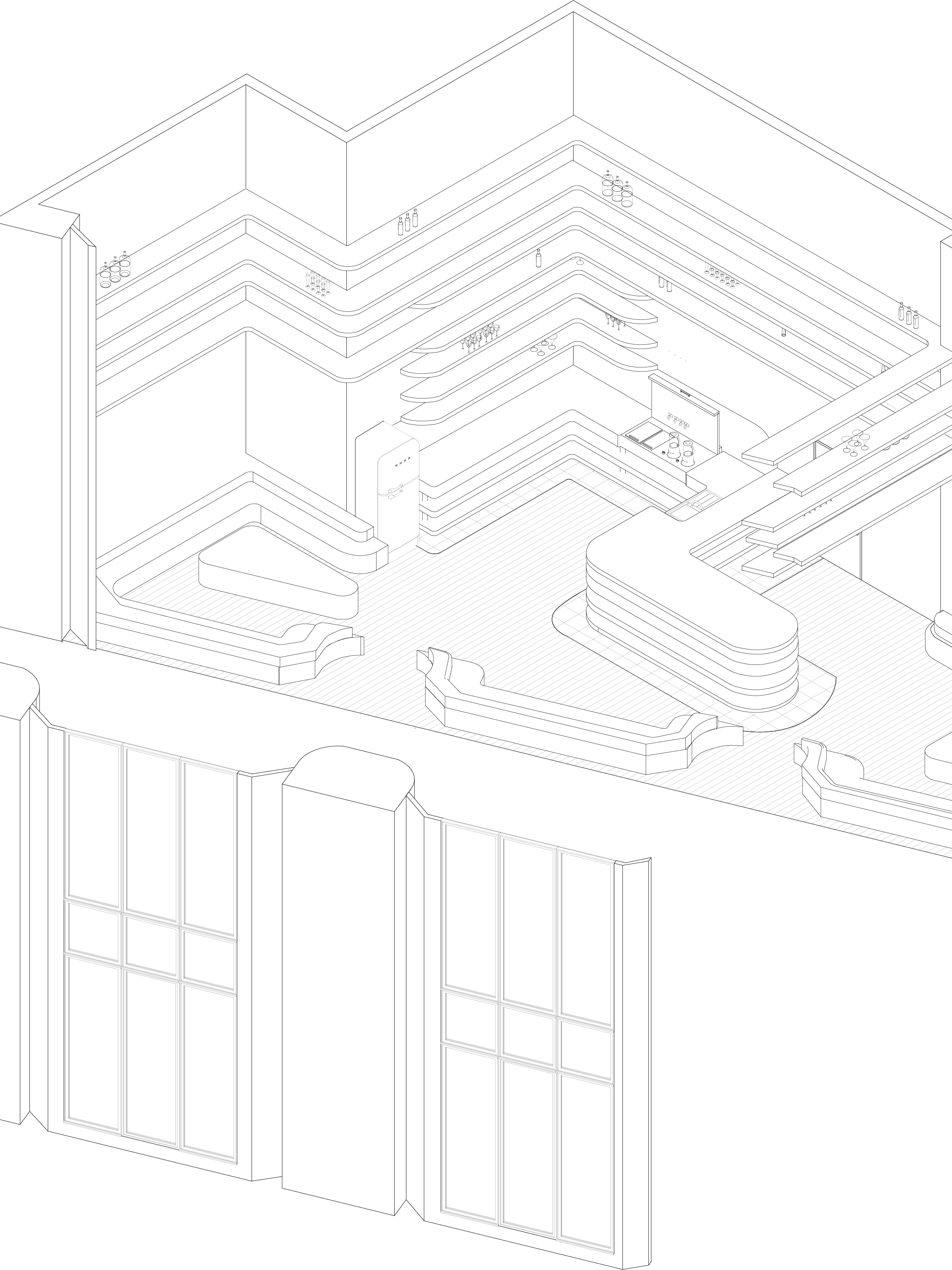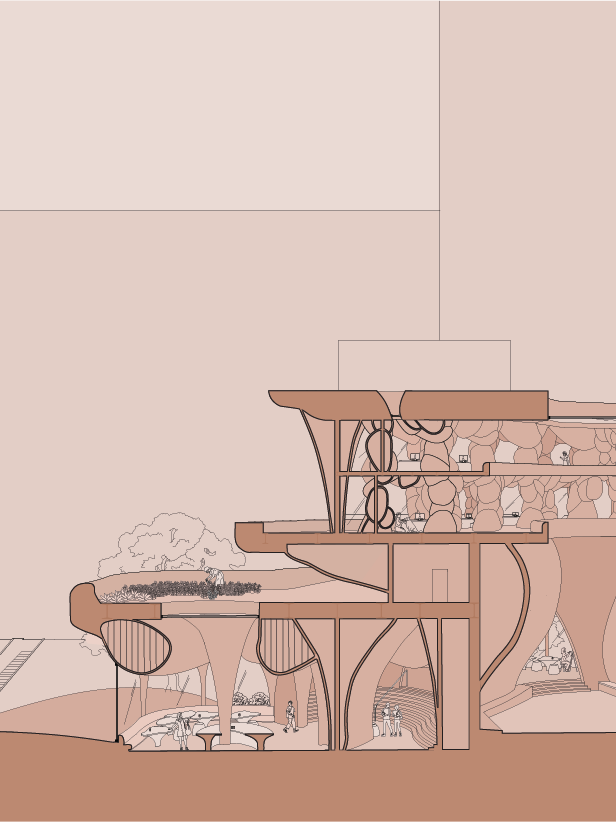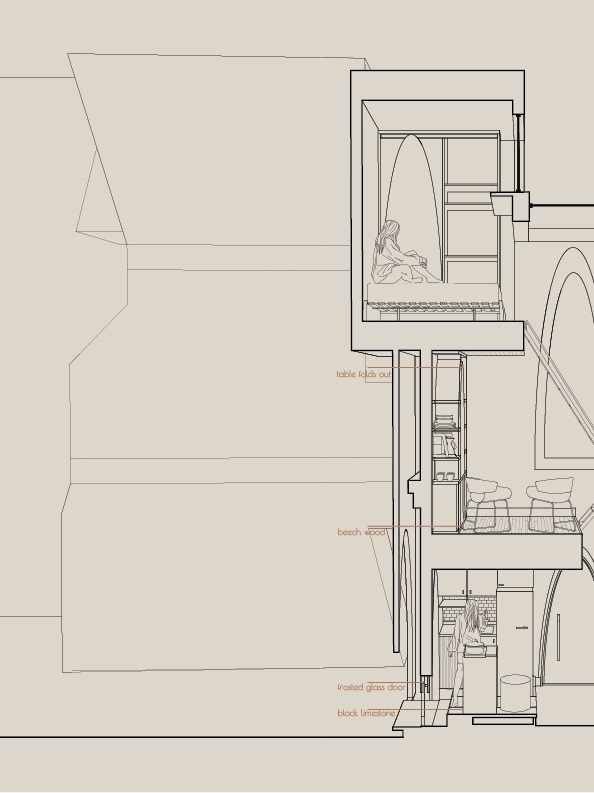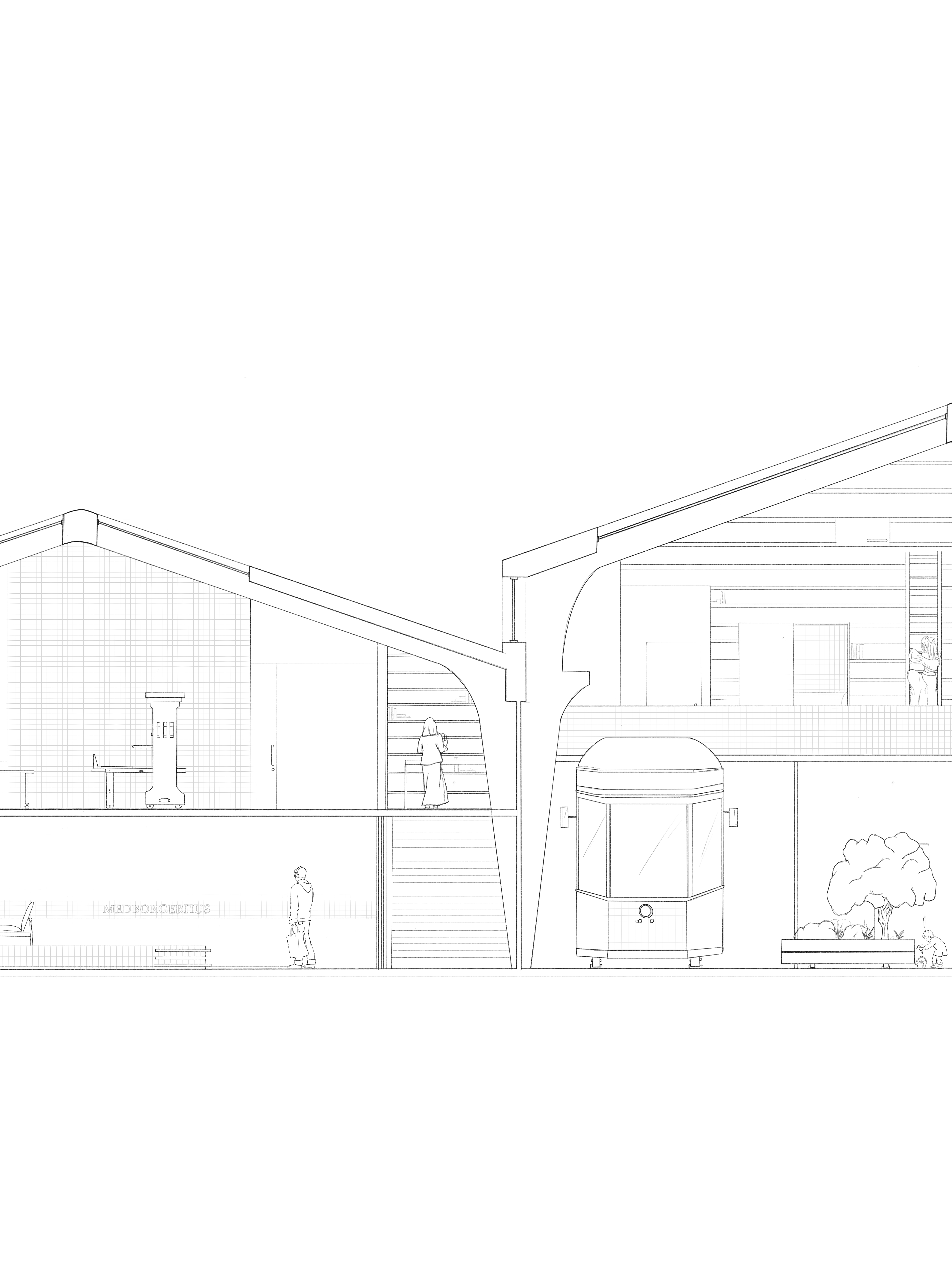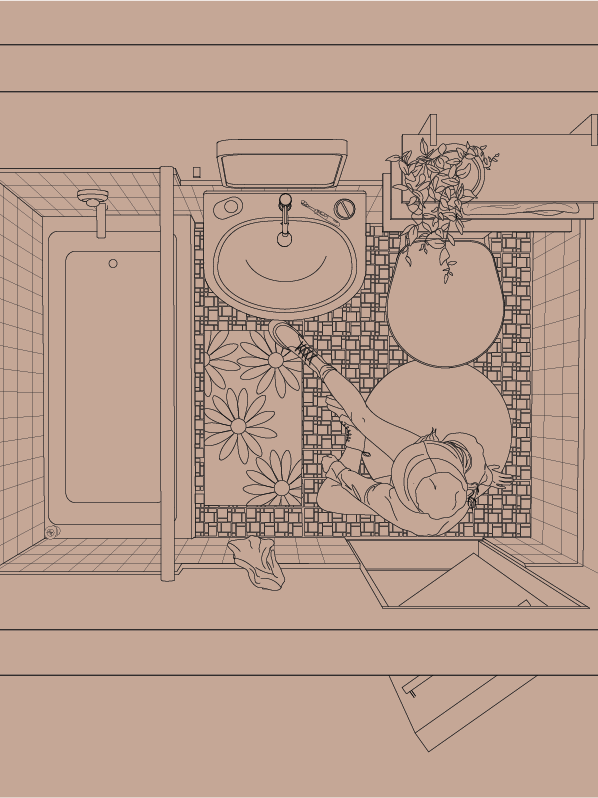Rocky Top Reef asks how elements of themed entertainment design can be implemented into a fully immersive SCUBA diving training facility on campus. The creation of a fully immersive dive training facility will greatly reduce stress in new divers as they move from confined water training ,the pool, to open water training, natural bodies of water. The project started by examining four fields of thoughts looking at immersive environments and scenario based training :theme parks and themed entertainment designs, dive training techniques, and existing immersive training environments. The evidence collected from the research was curated into a checklist of standards and needs to create a fully immersive, experience-based SCUBA dive training facility.
The checklist was then implemented into a design proposal of a dive facility that is centered around creating life-like training in a safe and controlled environment. The site for the final design proposal is the HPER building pool where the current SCUBA program at the University of Tennessee is held. When divers take a giant stride into the pool they are immersed in a completely new environment. The gunite walls are sculpted to look like large rock formations and there is artificial coral and sand on the bottom to teach divers about coral conservation. The visuals in the pool act as both a reference to the open water environments and as training tools for students. The pool will give the students an opportunity to be fully immersed in an environment that feels like open water but is still a controlled and safe environment.
The drawing above shows the difference in confined water training, the 9ft pool, and open water conditions. Many SCUBA students experience a large amount of stress when moving from a 9 foot pool with tile walls to a 70 foot quarry with low viability or a 100 plus foot ocean. Rocky Top Reef creates an immersive, life like environment to bridge the gap between confined water and open water training.
Artificial coral [.5] [.8]
Constructed of fiberglass the simulated coral will be used as a teaching to teach new and experienced divers the importance of proper buoyancy (a diver's position in the water) especially when it comes to reef and wildlife conservation.
Constructed of fiberglass the simulated coral will be used as a teaching to teach new and experienced divers the importance of proper buoyancy (a diver's position in the water) especially when it comes to reef and wildlife conservation.
Underwater cameras [.2] [.4] [.9]
Multiple cameras are placed throughout the pool to monitor the safety of each diver in the water. Video footage will be streamed into the SCUBA office where dive masters or instructors can watch students during training live or where students can watch replays of their training scenarios
Multiple cameras are placed throughout the pool to monitor the safety of each diver in the water. Video footage will be streamed into the SCUBA office where dive masters or instructors can watch students during training live or where students can watch replays of their training scenarios
Cave simulator [a.3]
The cave simulator simulates cave] and cavern conditions that drivers may face in open water
Unlike a real cave the cave simulator has wayfinding lights that can be turned on or off to get students more acclimated to a new, dark, and often claustrophobic underwater environment
The cave simulator simulates cave] and cavern conditions that drivers may face in open water
Unlike a real cave the cave simulator has wayfinding lights that can be turned on or off to get students more acclimated to a new, dark, and often claustrophobic underwater environment
Compass navigation Course [a.2]
Compass Navigation is a key skill in any diving course, but especially in NAUI’s Advanced program
The compass navigation course Includes movable, writable surfaces that can be placed at different locations throughout the pool The instructor or dive master can change the heading and directions on each of the Seven navigation checkpoints so that the course is always changing
Compass Navigation is a key skill in any diving course, but especially in NAUI’s Advanced program
The compass navigation course Includes movable, writable surfaces that can be placed at different locations throughout the pool The instructor or dive master can change the heading and directions on each of the Seven navigation checkpoints so that the course is always changing
Classroom [m.1]
The classroom will house the lectures associated with dive training such as dive tables, dive physics etc. It is on hydraulic lifts where lectures can take place above pool level or below. When the classroom is lowered below pool level, students can watch training scenarios take place in the water.
The classroom will house the lectures associated with dive training such as dive tables, dive physics etc. It is on hydraulic lifts where lectures can take place above pool level or below. When the classroom is lowered below pool level, students can watch training scenarios take place in the water.
Ascent rate training tool [.3]
Lights on back wall light up at a rate of a foot every two seconds Students will be able to time their accents with the lights in order to ascent safely
SCUBA standards say that a dive must ascend at the rate of half a foot a second to reduce risk of decompression sickness or other dive related injuries. As a diver ascends the nitrogen bubbles increase in size and if a diver ascends too quickly they risk getting the bends.
Lights on back wall light up at a rate of a foot every two seconds Students will be able to time their accents with the lights in order to ascent safely
SCUBA standards say that a dive must ascend at the rate of half a foot a second to reduce risk of decompression sickness or other dive related injuries. As a diver ascends the nitrogen bubbles increase in size and if a diver ascends too quickly they risk getting the bends.


